A few weeks ago I sold my Canon DSLR kit and purchased a Sony A9 II along with a small Sony lens selection, ending 15 years of professional work with Canon gear. As my close friends and family can attest, this was not a decision I took lightly. I agonized over it for close to a year, and as each month would roll around I would seemingly find another excuse to drag my heels. “I’ll just wait to see what they come out with next month”, I would say to myself. Change is scary.
When I say “they”, I didn’t mean one brand or the other. It could be a new lens from Canon or a new one from Sony. What I was looking for was some sort of defining moment that swung the balance so much in favour of one or the other that the decision would become crystal clear to me. Finally, that moment came, but before I discuss the tipping point, I want to set the scene a little bit by talking about my time with Canon, and the events in the year prior to the switch, which started to plant those seeds of change.
Back In The Day…
My first Canon DSLR was an EOS 10D that I bought on eBay. At the time you either picked Canon or Nikon, and my choice was pure chance. I knew nothing about the cameras on the second-hand market at that time, but the camera served me well and never let me down. If something doesn’t let you down, you don’t tend to think about change. So there I was, a Canon shooter. Then of course your lens collection grows and grows, with each purchase making it financially harder to change systems. At this point, however, I wouldn’t have considered switching to another brand. I quickly graduated to using Canon’s flagship 1-Series cameras and their big white lenses, which made a lot of sense because I was making my living shooting sports and that was simply what you used at the time if this was your job.
At some point, I also picked up the then-revolutionary Canon 5D Mark II, a camera which really changed the direction of the photography industry by offering full HD video recording. Even if you don’t shoot video with your camera, this was the genesis for other features such as Dual Pixel Autofocus and in-body stabilization. I think it could be easily argued that even a decade ago it made mirrorless cameras an inevitability.
Canon’s camera division seemed to get a little complacent after the success of the 5D Mark II, though, and I wasn’t seeing an awful lot of innovation from subsequent models. None of their cameras excited me anymore, and whilst I bought them because I knew they would reliably get the job done, it was also clear that Nikon, and subsequently Sony (who now supply Nikon with sensors) had overtaken Canon in terms of sensor image quality. Specifically high ISO performance and dynamic range.
I continued to stick with Canon at this point because whilst their camera department was asleep, their lens designers seemed to be wide awake! Over the last seven or eight years, Canon’s lens designers consistently amazed me with designs that simply couldn’t be found in the lens portfolios of other brands. I’m talking about lenses such as the 8-15mm fisheye zoom, the 200-400mm f/4 with a built-in teleconverter or the 400mm f/4 DO lens with its diffractive optical element and incredibly low-for-its-focal-length weight. They were also the first to come out with macro tilt-shift lenses, and the additional axis of stabilization on the 100mm macro lens was also revolutionary at the time, to name just a few of their innovations. When people would ask me “Canon or Nikon” I would always reply “Use Canon if you want to the best lenses, and Nikon if you want to the best Cameras”.
And then Sony came along. Quietly at first with their Alpha DSLRs, followed by a bang with their FE Mount full-frame mirrorless cameras.
Sony Is Coming
I kept an eye on them for years, but the lens selection was severely lacking for someone that wanted longer focal lengths to shoot sports and wildlife until the Sony 400mm f/2.8 GM came out. At this point, I thought to myself “Ok, they’re pretty serious, but I need to see more long lenses.”
By this time the Sony A9 had also been launched and the autofocus system was hailed by most as the best on the market. Canon’s AF system had always been weak compared to Nikon when it came to tracking moving objects, and now it seemed like they had fallen into third place with the rise of Sony and their subject tracking algorithms with face/eye tracking and even animal eye tracking.
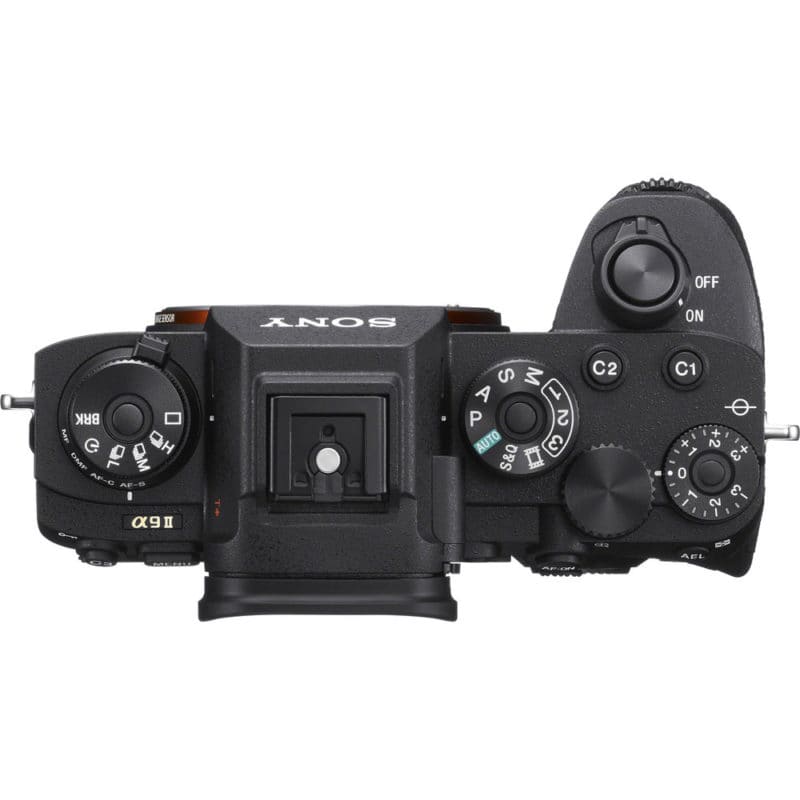
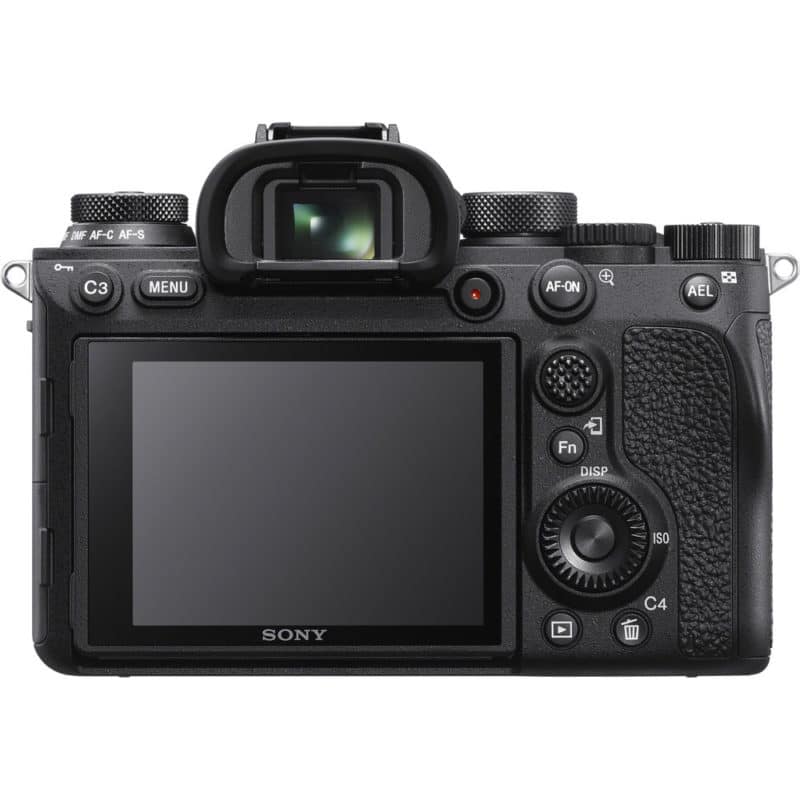
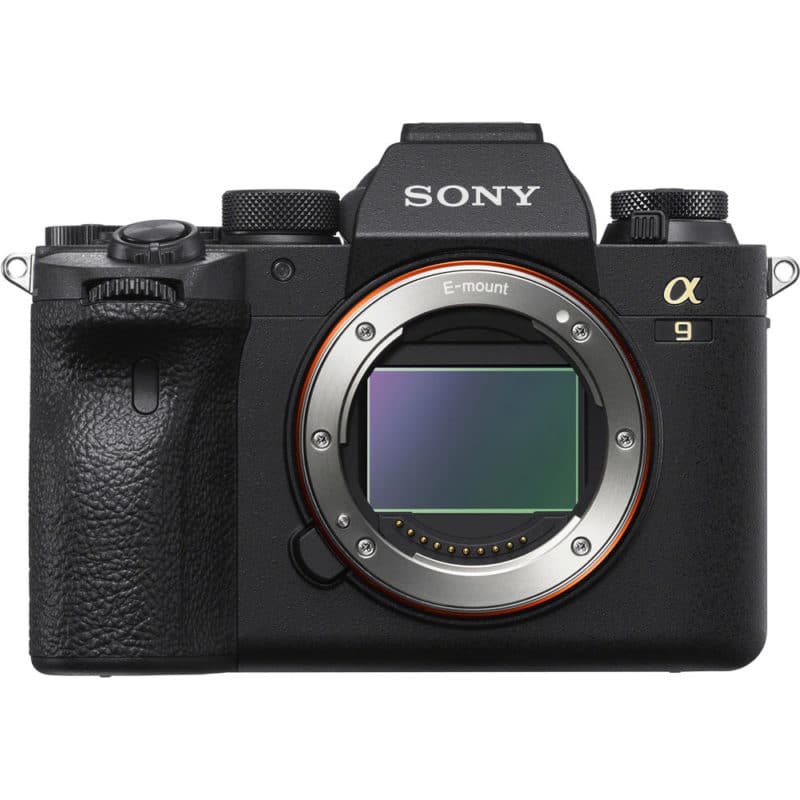

It just so happened that around this time Sony was a sponsor for a photo festival that I was helping to organize in the Yukon, and when they showed up they put an A9 in my hands to play with. In a crowded room full of people I watched the AF system effortlessly tracking people and faces as they wove in and out of crowds and passed behind static objects. The sheer “stickiness” of the AF system was completely alien to me as a Canon shooter, as was the totally silent blackout-free shooting through the viewfinder. It’s as if the camera isn’t taking a photo at all, and yet it’s actually taking 20 every single second. I was literally left with my mouth gaping open.
Had I been missing out on this the whole time? I began to think of all the times my Canon cameras had blown the focus on moving wildlife and caused me to miss peak moments during animal encounters. Knowing how much better the Af tracking was on the Sony cameras, could I really keep shooting with Canon DSLRs? People like to say it’s the photographer and not the camera, but that’s only true to a point. I can put all my skills to use and frame up the perfect shot, but when you shoot with a razor-thin depth of focus on a super-telephoto lens, you do need your camera to play its role too and help you get the subject in focus. If it’s not tack sharp on the eyes, it goes in the trash. I have very exacting standards.
This was spring 2019 and the Sony seed had now been planted. I paid close attention to Sony’s launch cycle and realized that the following year was a summer Olympic year which would mean new flagship cameras from both Sony and Canon (and Nikon – but I didn’t care). So I decided to sit on the decision until I had seen the next contenders for the pro camera throne. This also gave me some time to look at Canon’s growing lineup of RF lenses and cameras. Yes, in the midst of all of this, Canon had finally jumped into the full-frame mirrorless market themselves.
Olympic Contenders
Towards the end of 2019 Sony launched the A9 II (it made some people mad), and whilst it was a modest update to the original A9, any update to an already incredible camera is surely worthwhile. Importantly, at this time they also launched a 200-600mm zoom lens and a 600mm f/4 super-telephoto lens. For my line of work, these kinds of lenses would be necessary and while it didn’t seal the deal, it did now made a switch to Sony a viable option. I was very tempted, but with only a month or two until the unveiling of the Canon 1DX Mark III, I thought I’d wait until I saw that to make a decision.
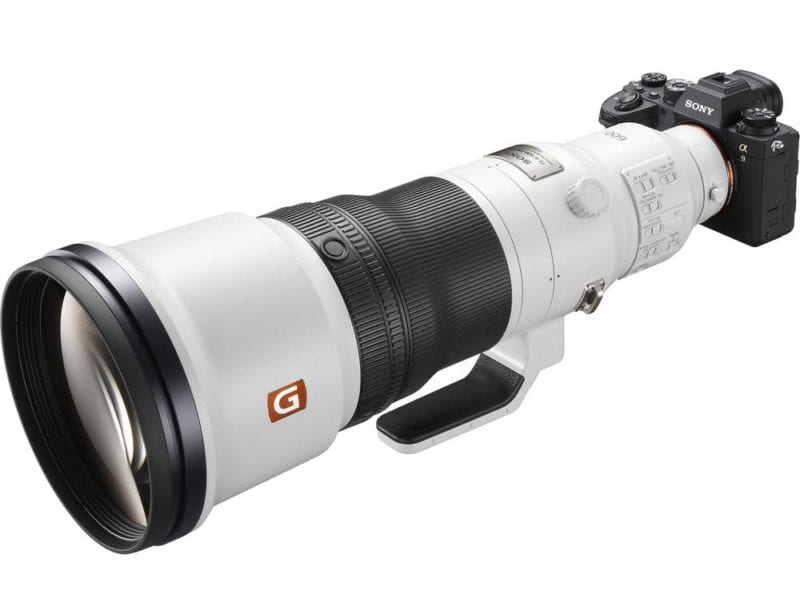
Sure enough, the 1DX Mark III was launched a short while later and despite a slew of minor new features there was nothing ground breaking enough to make me reach for my credit card. No IBIS, no increase in resolution, no widened spread of AF points through the viewfinder and no decrease in size or weight.
Clearly, the most impressive feature of the 1DX III is the 20fps capture with Live View and near-total frame coverage with AF points in that mode, but who is going to shoot a huge camera like the 1-Series by using Live View? It’s not practical, despite some of Canon’s diehard users trying to justify it in various YouTube videos. I really had to laugh at some of them! I could shoot 20fps with the Sony A9 II, get a higher resolution, a camera that is half the size and weight and saves over $2000 on the cost of the camera at the same time. On top of that, I would be getting an autofocus system that is a known factor, something I know to be incredible. Of course, Canon says every time that their autofocus is “greatly improved” but in the last decade they have consistently lagged in this area and I simply couldn’t see them suddenly jumping to the forefront. Certainly not with the phase-detection system you use through the viewfinder and those centrally clustered focus points. When you’ve shot with a camera like the A9 II and you see AF points covering 95% of the viewfinder, it’s nearly impossible to go back.
My mind was made up. I was switching to Sony.
A few weeks later I took delivery of an A9 II and a modest starter kit comprising of the 24mm f/1.4 GM for landscapes and underwater photography, and the 200-600mm f/5.6-6.3 G for some wildlife. After some time to get used to the system I will test some additional lenses and decide what will best fill the gaps in my lineup. I certainly have my eye on the gorgeous 135mm f/1.8 GM that I have already tested at a local store.
I plan on writing some additional articles very soon about my thoughts on the A9 II and the Sony system as a whole, now that I’m fully immersed in it. What I will say for now is that even after just a couple of weeks with this new setup, I’m ecstatic. I think for me it was just the right time to make this switch, and the A9 II was just the camera I needed for the work I’m doing right now. The autofocus system is unreal, and Sony’s more recent lenses such as the stunning (and small) 24mm GM, and the ludicrously well-priced 200-600mm G show that their lens designers have really turned a corner from some of the earlier lacklustre lenses such as the 24-70 GM. I still want to see some more lenses in the lineup (300mm f/2.8 GM?) and I’d like to see some of the older duds get a refresh, but there’s plenty there to work with for now.
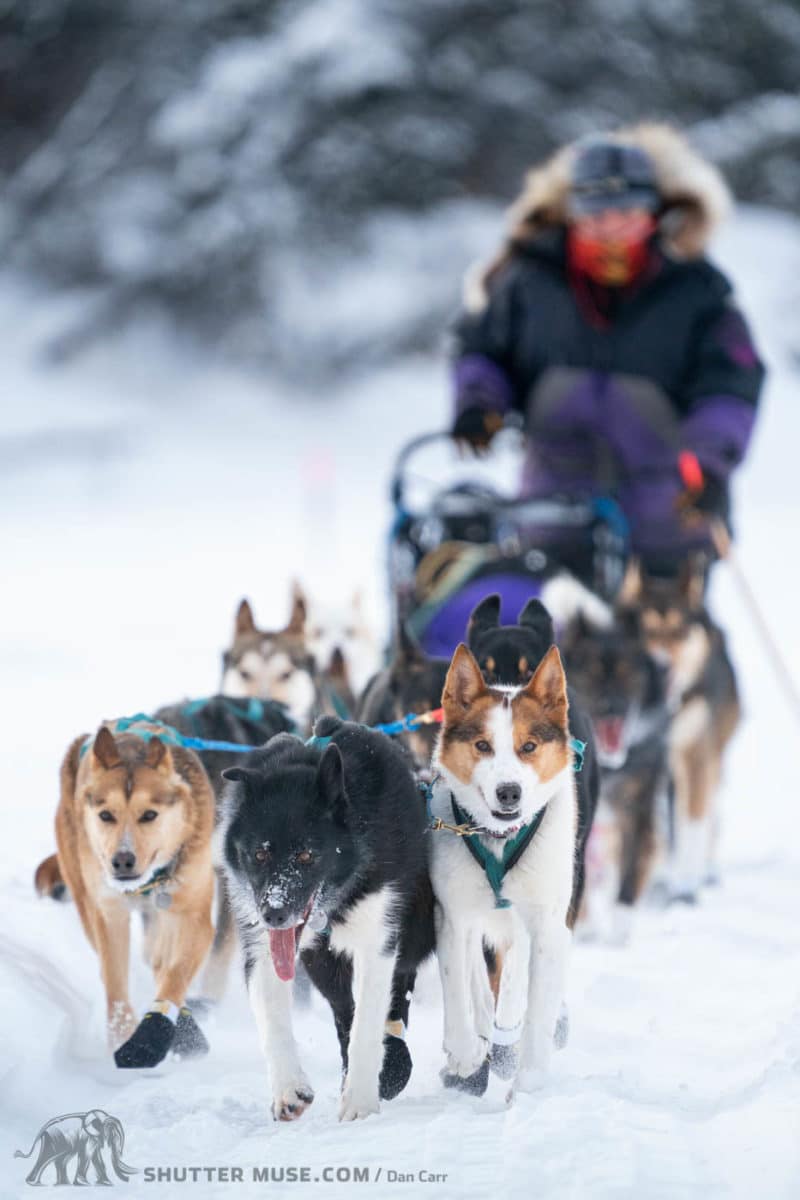
Will this be forever?
I have watched with intrigue as Canon have launched more and more RF lenses for their new EOS R mirrorless camera system. At the time of writing this post, the R5 camera has also just received a development announcement and it appears to be the first serious EOS R camera that can match the performance of the RF lenses. These RF lenses have been almost universally heralded as top performers in their various classes to this point, but then that is what I have come to expect from Canon, they really know how to make high-end lenses. Can they pull through and deliver a competitive camera as well though? We will have to wait and see. A camera with the speed and AF performance of the Sony A9 II, combined with the proven ergonomics and user-friendliness of a Canon camera would be a compelling option. I know Canon users are hopeful for such a turnaround with the R5, but they have some serious catching up to do if they are going to come close to Sony in terms of AF performance.
One thing is for sure: I’m definitely done with DSLRs.
PART II – The Follow-Up
After posting this initial article I received a lot of messages and found myself answering the same questions and addressing the same topics over and over again. Instead of doing that forever, I wrote a follow-up article.
If you enjoyed this first article about my switch to Sony, I’d encourage you to read Part II where I address the reasons I did NOT switch to Sony.

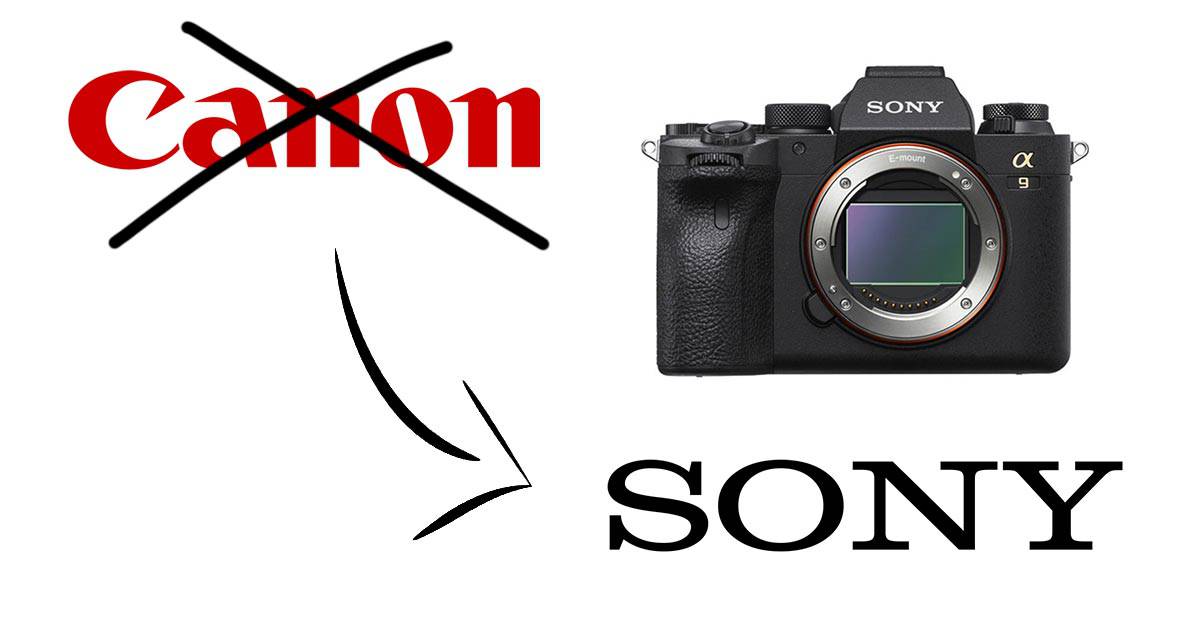


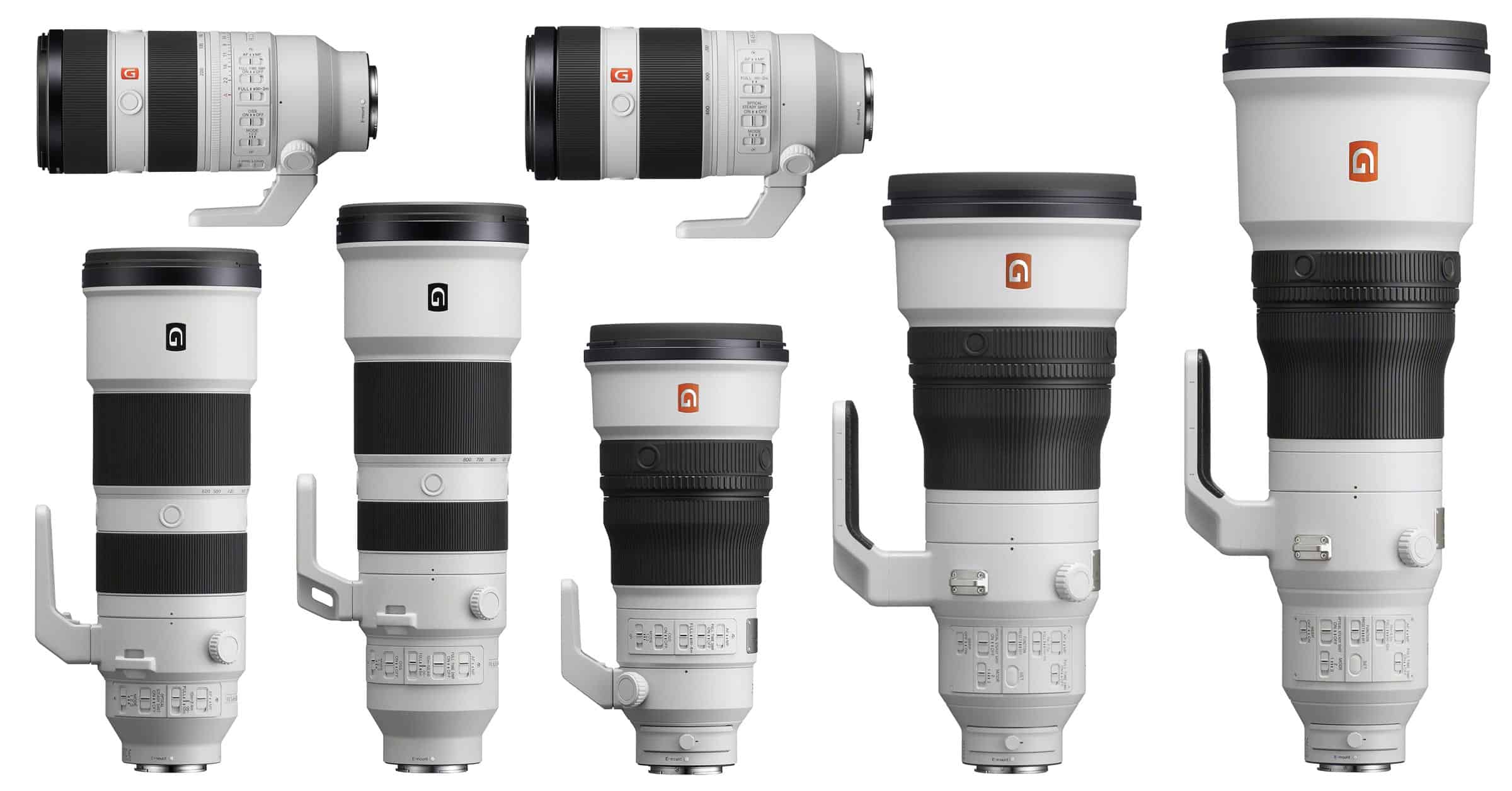

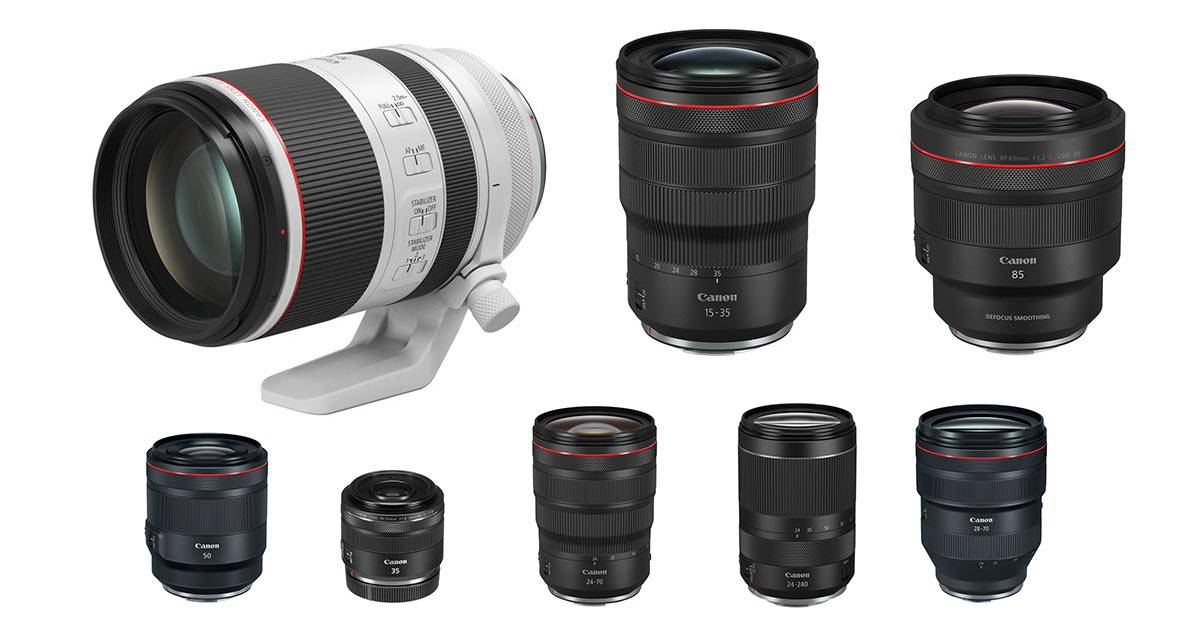
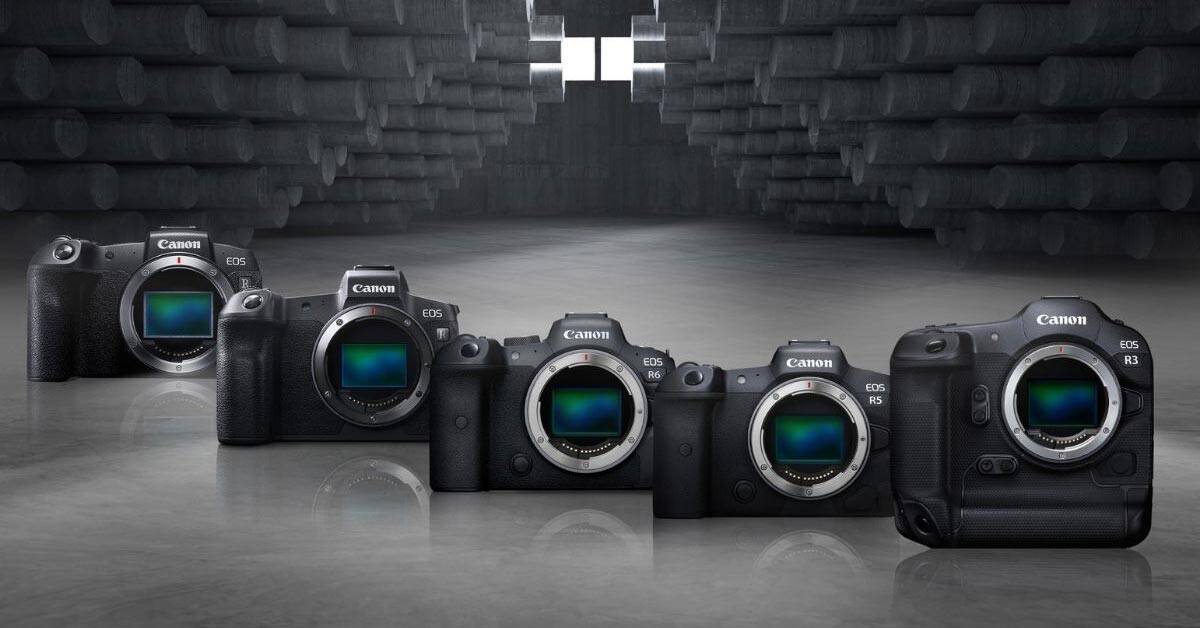

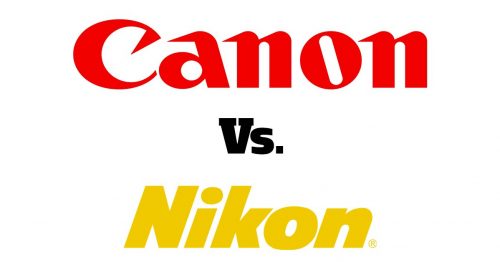

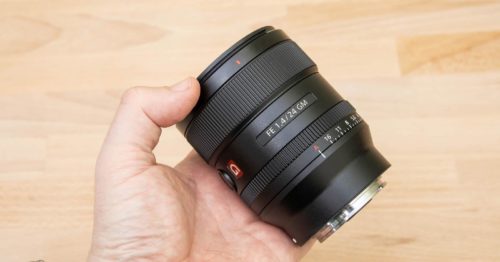
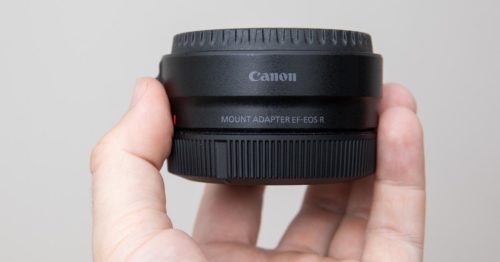
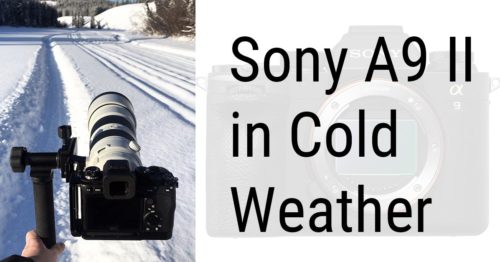
Great blog post Dan. I definitely connect with you on that first camera purchase i.e. Canon vs. Nikon. Bought my first DSLR on Kijiji, a Canon Rebel XT. Didn’t buy it because I thought Canon was better, that was the opportunity on the second hand market and I took it. When I switched to mirrorless 3 years ago, I debated heavily between Fuji and Sony. I did my research and things were close back then. I was told by some photography store reps that if I wanted stills I should choose Fuji and if I wanted to do video to choose Sony. I see now that was a serious oversimplification. Needless to say I had to pull the trigger and I went with Fuji, since I’m a stills guy. NOW, I’m really curious about the Sony system but I’m already two bodies and 3 lenses in…sooo haha
Yeah three years is a long time in the mirrorless development world as well. I’d say things have evolved differently for those two brands in those three years. Sony definitely looking to accommodate more sports and wildlife shooters, where Fuji is a bit more focused on travel, street and landscape.
This is interesting. I too left Canon . After 30 years with there stuff. It was hard but Sony was calling hard. I went with the a9 and am extremely happy. Birds in flight are no longer a problem. I was tired of Canon taking us for granted. Now, some of my friends that had switched to a four thirds brand have bought the Sony.
A common story! I want to do a lot more BIF this year and that was also a reason for the swap. Night and day.
Agreed about where the two companies are focusing their efforts. Though, there was is a new XT-4 being announced today and I’m pretty stoked based on some leaked information. 6.5 stops of IBIS. SIX POINT FIVE, that’s nuts! Happy you’re enjoying the new switch. Your content is great no matter what lens or body you use. A good photographer is a good photographer, point finale!
Thanks for the kind words Franco. You are right, 6.5-stops is pretty crazy!
Hey Dan, I have a Sony a9. I would love to know how you set your menus up for that camera. I live in Vancouver and spend a lot of time in Whistler. Maybe you could suggest some out of the way locations. Love your reviews.
Hey Wendy. I’m planning to so a setup guide for the A9 II, as well as a more generic “Sony Camera Customization” guide. Keep an eye out for it soon!. Get yourself to Semaphore Lakes in the late spring, near Pemberton.
Thanks for the tips Dan.
good luck with the after sales service !!
Have you had a bad experience? If so, can you share it?
I am sorry for this very late response.
To begin, I must specify that I am French and therefore I had to do with the French or European service, because given the accent of the people on the telephones, I was in Belgium.
When I had problems with Sony it was just after the acquisition of Minolta. And there I fell on closed doors. The after-sales people did not know how to manage anything and did not answer my questions or my expectations concerning a loan of equipment. I recovered my device after several weeks.
So I went to Canon. And I also had a problem, a problem with the camera. The device was repaired in three days of memory and I immediately had equipment ready.
This is my experience and this is why I will not recommend Sony.
Sorry to hear this story 🙁
Canon European Warranty System does not cover all the Europe. Luckily I had no issues during my 13 years with Canon. But if you appear in one of those “grey” countries (according to Canon), just hope you will not need a service. This was not the reason why I switch to Sony, but the fact that the company like Canon is not able to cover Europe does not add points definatelly.
Canon European Warranty System does not cover all the Europe. If you appear in one of those “grey” countrys (according to Canon) just hope you will not need a service. I had no issues with Canon during my 13 years. And its disability to cover all the Europe was not the reason why I switched to Sony, but this fact alone does not add points to Canon anyway.
I have purchased my gear through a Henry’s Camera and they look after the service and they are excellent.
Good read. Thanks for sharing. I’m interested in a pros opinion about lens evaluation. Do you evaluate the copy you purchased to make sure you got a good one (looking for blurry corners)? If you get a copy of a lens you aren’t satisfied with, do you return to the seller, or try to have it serviced by the manufacturer? I’m currently in this situation and in my return window and unsure about what to do. Thanks!
This is an interesting question. Generally speaking, I only buy pro lenses. So with Sony this is G and GM lenses, with Canon it was L-Series. Copy variation is generally small, so honestly, if I take some shots and like the look of them, I leave it at that. I have never had a situation where I was concerned that I had got a “bad copy”. That said, this is a good reason to build a rapport with a local dealer for big ticket purchases. If I ever did think I might have a bad copy, I’m sure I could call my usual dealer and they would send me another one to compare it to. Or simply make a switch for me. I guess if you also have a local physical retailer, you could go in with a tripod and compare several copies if they have them on the shelves. Any good dealer would accommodate that request.
It sounds like you think you might have a bad copy. In this case, what would be the downside to returning it, and then simply getting another one?
How much of a weight savings is the Sony camera with the 200-600mm lens over a 1dx mkIII with a 500 or 600mm f4 lens?
I think it would probably be about 1kg. Just a guess though.
Dan, great post. Love the historical context and sentiments along the timeline, both of which closely parallel my own. I was struggling Canon vs Sony last 12 months too, looking for a catalyst to decide what to do. Ironically, I made the decision to go all in on Sony the day the R5 development announcement was made! I had just returned from a trip to Panama where I had all my Canon gear but also an a9 and the 200-600 which I had recently purchased, dipping a toe in the water. It wasn’t even close for wildlife / birds! The AF tracking, the dynamic range, the high ISO performance…the combination of the three is just silly good. And I don’t even have the a9ii or a prime…yet. Look forward to hearing more from you as you gain experience with the system and the glass.
Thanks Craig. I’m not surprised to hear you have had the same experience. Have fun with your new gear! I look forward to being able to bring more Sony content to this site as well. DC
Dan. Great article. Historically was a Canon user, starting w/ Canon AE-1 film camera & loved it. Tried Nikon F3 but couldn’t hold it in position w/out shaking. Back to Canon dil & digital. Didn’t make the transition to digital well, esp w/out the traditional external dials & the need to drill down through menus!!!
Last Canon was a 5DII w/ 3 L lenses. Decided to either master it or sell it. Gear serviced, one function shoot & then the gear was stolen😳🤬
I knew I wasn’t buying FF again.
Researched Fuji, Sony & Olympus. Discounted Sony as too many models & too quickly new models, film quality, more video oriented & other tech/spec reasons. Finally decided on the fuji xt3 & 3 lenses. Happy w/ my decision – still have much work to do … fits my hand, external key functions, understand the menu, jpeg results sooc is amazing.
Love using ‘the tool’, love recording my world -and enjoying the photographic community!
Thanks for sharing your story Claire! I totally understand where you are coming from when you say “too many models & too quickly new models”. They did seem to offer new cameras at a crazy pace. Hoping they have slowed down a little now.
One day I’d like to find some time to shoot more Fuji. I had a couple of X100s and always loved the output from those cameras. Lots of character!
Why I unfollowed and unsubscribed.
I thought of doing this a while back but never had a really good reason, till now.
With the change from Canon to a Sony I can now decluter my inbox with useless spam.
Up to you. I don’t plan on having less Canon reviews on the site though. I just plan on adding Sony ones. In fact my next two lens reviews are Canon lens. One EF and one RF. I must say that I do find it pretty funny that you didn’t have a good reason to unfollow until I switched to shooting Sony. How exactly does me primarily shooting another camera brand affect your photography?
Yep. I shot birds with an A9 alongside my Nikon D500 for a year and got a good sense of their strengths and weaknesses. The Sony isn’t as consistently accurate on BiF and too often flatly fails to focus on a small perched bird in mid-ground. The latter is increasingly reported.
It’s happened with 3 Sony supertelephotos and also the A7R III. I’ve found a couple of settings that make it less likely but nothing to cure it but I’ll go on trying.
Curious. Have you followed along with Art Morris on birdsasart.com to see his journey from Canon to Nikon to Sony for BiF? He swears by Sony for BiF.
Good luck with the new system, Dan. I’ve had a brief flirtation with Sony, but I’m a Canikon many myself.
I shoot for pleasure, not to make a living, so the question of quality is for me to determine – not my clients (I simply don’t have any!)
So I shoot mainly with Nikon – and my selection of lenses is Nikon compatible (‘tho not all Nikon Brand). And my “go anywhere” is one of Canon’s PowerShots. And I’m happy, too.
It’s only a matter of time before Canon does something to catch up, in your terms. They’ve done such a great job with their lenses over the years that they may have become a bit complacent about the cameras that went with them – I don’t know, I’ve never even picked up and handled one of their DSLRs – pro”s in general aren’t into “pixel chasing”, time after time you see articles by pro’s suggesting that anything in a 20-25MP range is great, while amateurs squeal with delight as new models come out and the makers announce “more pixels” to lure them into their nearest camera shop.
In the end, there’s no “perfect” choice. It boils down to what makes you happiest. Sony for Dan. Nikon for me (DSLR’s, too! – because I’ll likely be dead, before I could replicate my current selection of lenses for their Z-mirrorless cameras). A Hassy for a friend of mine, who recently dumped Sony after years of being happily married to them. Olympus, Ricoh, Fuji, etc for others.
Thanks for sharing your story Jean Pierre! You’re absolutely right, you have to use what makes you happy. Perhaps Canon will make me happy again in the future. One thing I have decided is that I will free myself up a little more to be fluid with these decisions. If i’m more selective about the amount of lenses I have, I’ll probably be happier and at the same time free myself up to more easily move again in the future if there is something I see that will benefit me and my business and bring me joy when I shoot.
Dan,
Similar experience. 35 years a Nikon shooter for sports, events, travel. What sealed the deal for me was the size and like you the autofocus performance. I was lucky to get the A7R4 to take to Nepal and Mt. Everest. Thank goodness! The weight savings over the D5 and the 850 was massive. I took the A9, A7R4, 55 1.8, 16-35 2.8 and the 100-400 Sony lenses. Everything performed flawlessly and while there was a bit of a learning curve on the metering of the Sony vs Nikon there were no show stoppers.
The icing on the cake was the pricing. Both the A9 and A7R4 at half the price of a D5/D6. I also have to mention that the folks at Sony Pro actually listen to you when you call. Nice review and thanks for the effort you put into Shuttermuse.
Thanks for sharing, Bill! What an adventure that would have been for you. I long to go to Nepal one of these days, and yes, a smaller mirrorless kit would make quite the difference on a trek like that. I think I will most likely get an A7RIV to compliment the A9 II at some point. It seems like a perfect pairing. Cheers for the kind words.
COMMENTHi Bill. I am thinking of getting Sony 55mm 1.8 for my a7rIV. As you have experience using the set I was wondering if you recommend it for having high quality sharp photos and reliable AF.
Hi Dan, I hope that you don’t mind a strange question. I’ve been thinking about switching over from Canon. However, I have big hands and there didn’t seem to be much room between the grip area of the Sony and the lens. I tried the A7R3 in the shop. Did you have any concerns about this with the A9? Thanks.
Difficult one for me to answer really as I don’t have big hands. When buying gloves, I’m almost always a size medium. The A9 II and A7RIV feature larger grips than previous generation so if you want to feel the difference with the latest gear you would need to try one of those in the store and see how it fits you. It is true that the lenses do feel a little cramped in that area so I actually don’t find this a strange question.
You forgot to mention one of the most important things for shooting wildlife. Using a Canon 1Dx MkII the animals would often look up at the noise from the mechanical shutter and change their behavior. The Sony shoots 20 fps silently!! That was the final tipping point that made me change.
Yeah this is a good point. Silent mode is amazing!
Dear Dan,
tx for sharing. I made a similar descision in 2016 from Canon to Fujifilm with some of your reasons and some others. I personally found Canon DSLRs too heavy and made it for Fujifilm, finding them much better than Canon cameras and much better than many of their lenses. You forget to mention, that Canon builds some really bad lenses too. It might be easy for you to know about the quality but many users are buying a lot of rubbish with Canon (not talking about RF).
Fujifilm lenses are a dream and if a photographer is not into wildlife or sports, the lenses are fantastic. Much better than most of the Canon EF-lenses.
Personally I think Canon has a huge problem, much bigger than they think. And on Camera like the R5 will not turn the rudder. There are very little native RF-lenses and like you said “Canon hast a lot of catching up to do!”.
Tx again,
Peter
Thanks for joining the conversation Peter!
I have been a Canon user for a few decades. My digital entry started with the D60 (not 60D) leading to my current 5D Mark IV. I have been anxiously waiting for Canon to get its mirrorless world organized. They may have done so with the rumored specs of the new R5. How do you anticipate this to compare with Sony. Hopefully my wait has been worthwhile.
The R5 will be VERY interesting. On paper the specs that we know will make it competitive, but I suspect the 20fps specification that is being thrown around, will be crippled in some way. Perhaps with a very small buffer or no autofocus or JPEG only. I don’t want that to be the case… I just can’t see how Canon could make such a giant leap in data throughput to accommodate 20fps at 45MP.
Like I said in the article, I will test the R5 to compare it to my A9 II. My guess is that it will compete closely, but still won’t match the AF of the Sony system. Not everyone needs AF speed and tracking like a Sony though, so I think it will probably bring Canon back to “major player” status in the mirrorless world. I’m excited to see it!
One aspect of the new Canon R mount is that it has many more electronic connections (50% more) than the old EF mount. The data flow-through is supposed to be amazing. Maybe that will allow for some of the advanced features many people consider to be unrealistic?
In theory that could account for more simultaneous signals to be processed, but you still need the processing power on the chip end of things. Cameras are basically just computers and they all have processors in them. It would be unusual for any kind processor to show huge leaps like this. In the 1-series cameras they have always achieved it by using two processors, vs the single processor of the 5-series cameras. Perhaps we will see multiple processors in the R5… time will tell. I’m excited to see it!
While in Yellowstone last spring, I got to talking with a number of other wildlife photographers, and was quite surprised to hear how many were former Canon shooters that had switched to Sony. They had switched to the Sony A9 for the exact reasons you mentioned. I’m still a Nikon shooter but have contemplated changing to Sony. Good article. Thanks.
Thanks Mac! Yeah this is something I have seen a lot recently as well. There are several very high profile wildlife shooters around the wold that have moved to Sony recently. Paul Nicklen, Art Morris etc.
Dan: I moved to Sony in December 2018 after 28 years with Canon because of the advanced technology of Sony’s mirrorless cameras and continued innovation. Own the a7RIV and a9 and I am mostly a wildlife photographer so I also have the 400 f 2.8, the 100-400, 12-24 and the 24-105 Sony lenses. Skipped the a9II because it does not offer me any leap improvements. I purchased the 100-400 at the same time as the a9 since it was the longest focal lens that Sony had at the time. This lens although optically very good I do not consider a professional level lens since the zooming mechanism is difficult and slow. Wish Sony will replace this lens with one with internal zoom. Found that the a7RIV in combination with the 400 makes a great wildlife combination although the AF capabilities are not at par with the a9 have become my combination of choice when fast AF is not a must.
Thanks for sharing your thoughts Jose! I look forward to playing with the 400 f/2.8 at some point. I can see why this would be a great lens for the A7RIV. I’m suspecting that the 600mm might be a better choice for the A9II though, when I don’t have so many megapixels to use for cropping. I’ll have to do some testing.
Dan, Thanks for this great post. Having used Canon for almost 40 years as an amateur photographer and with varying commitment, it is the glass which has kept me – the sheer investment in it and the ability to use a great 35 year old manual lens on my latest camera from Canon (already 3 years old and under used).
In the last 10 years nothing has gotten me excited about new bodies from Canon. I don’t shoot video (should have, but don’t) and I realize that the autofocus system is the reason I have not gotten excited – whether in video or still. That is why I can still use my old manual lens – because I am often switched to manual anyway to get what *I* want in focus.
Having seen so many pro’s move to Sony, the writing really seems on the wall for both Canon and Nikon (though Nikon die-hards seem slightly slower to move).
By chosing to have a different lens system on the mirrorless cameras I believe Canon sealed their fate. While there is an adapter, it is a compromise solution – so new mount, and a reason to consider is this the best body for me. A new UI on the mirrorless body further compounds this – if I have to learn a new UI anyway, I can try all of them and use the best, not just the most familiar.
For me it will be a tough move due to the sheer cost of starting again with new glass. Fortunately I do not have the needs you do, so can start cheaper – but I have already decided I will not buy a new DSLR (I have a modified Canon mirrorless for IR, and love the form factor). And Sony looks favorite for the investment right now.
You just put all the things I’d not bothered to record and assess into context and help my next move – thanks for taking the time to do so!
Glad you found it useful Nigel! Thanks for sharing your thoughts on the subject.
Frankly I don’t care what camera system you use or why you chose it.
I heard you switched to the new douche mark2. How do you like it?
I love it. But why do you call it a douche?
A refreshing answer! I’m actually glad to hear that there are people out there who think this way. If I had posted that photo of the bison without telling you what camera I used, I doubt many of the tens of thousands of people who stop by this post this month would have guessed. There’s certainly a lot of things to learn about photography that have nothing to do with the camera system being used.
Hey Dan,
Great write up on the switch, hope you don’t mind but I do have
a few questions for you.
I started off with Sony, last being the a900 had a few nice lenses
including a few Minolta primes, changed to Canon 1 series as my
motorsport kicked up a gear and as you said yourself the Canon lens
lineup is pretty awesome!
Questions:
I have on more occasions than I like to remember been trackside for 8 >
10 hours at a time in torrential rain – even with all the waterproof
covers I can work with the 1DX mkII has had water ingress. How does the
Sony hold up to bad weather? the 200-400 seems to manage okay and my ‘go
to’ 70-200 2.8 mkII with 1.4 has never let me down I am painfully aware
they are getting a little old.
I used to find (even with raw shooting) that the colours from the Sony
were always better – especially reds and blues – bright paintwork still
frustrates the hell out of me with the Canon. Thoughts?
I don’t ‘machine gun’ shoot, never have, like to go for the single or 2
shot capture – I like the challenge! so FPS does nothing to impress me
– however focus lock / speed trackside really does matter, honest
opinion on this please!
200-600 for under 2k REALLY? my 200-400 was 11k can it really compare?
? ? ?
How does the Sony hold up to bad weather? I guess this is a hard one to answer until I have had more experience, but the A9 II is supposed to have improved sealing over the previous A9 (I can’t speak to the other models at all yet). Certainly it feels robust, and it handles extreme cold like a champ. In a side by side with my old Canon, I left them out in -25C weather until they had reached ambient temperature and the Sony was the one that turned on faster when I woke them up.
Regarding colour, I think it is swings and roundabouts. My first impression is that Sony has better tonality in bright colours, but sometimes I get an odd magenta cast in darker colours. If you pressed me, I would say my Canon cameras produced more accurate colours and the Sony can get there but it needs a little more fiddling with sliders in Lightroom.
Focus lock and speed is astounding. It would blow your mind. That is my honest opinion. This is by far the area where Sony has the biggest lead over other brands at the moment.
As you might know, I owned the Canon 200-400 as well so I can answer this one with certainty. The Canon lens is sharper, even wide open. And the difference in aperture is really significant when you need shutter speed. They are not really lenses that you can compare, if your primary subject is sports. That said, the 200-600 is phenomenally good for the price. I would have paid twice the price and still been happy with it. Don’t tell Sony…
Thank you for that, I will ponder on it some more and try to get a ‘hands on’ test before I make my mind up.
Very welcome David.
Hello Dan
The first Canon to touch my hands was the AE-1, and my apologies to the other users of that camera but to me it was quite clumsy to operate.
Not being able then to jump on Nikon’s wagon(the FM), I did modestly go for Pentax MX, upgraded to the LX, and till the advanced digital era did not complain.
Since 2008 forward, Pentax continued to drag their feet, both about the megapixel count and the Full Frame, and today if you’re talking about any potential aftermarket lens with far reach capability(500 mm), you’re stuck with their max of 450 mm.
The Canadian market is not holding too much stock of bodies, almost everything is ‘Special Order’.
Talking about Sony, the fact that their mirrorless bodies are missing to top screen data display, that’s a negative point for me, which in the end is leaving me with not much choice, but to dream about Nikon, or GFX.
I’d agree that no top screen is a negative. I miss it, but I’m training myself to look for that info in the viewfinder or the LCD screen. Eventually I’ll probably find that natural. For me the benefits currently outweigh the negatives.
Dan, thanks for the explanation. I’m curious if you’ve used any of your Canon glass with the Sony? I understand there is an adapter. If there is, and if the Canon lenses perform well, it might be a cost effective way for some of us to make the move to Sony.
Mike
Good question. Yes I have tried this, the adapter I have is the Sigma MC-11. The optical results are very good, you can certainly get a sharp picture. If landscapes is your thing, then I don’t see a problem with it at all. At least with the lenses I tested which were Canon 24-70 f/2.8 L II and Canon 100-400 IS II. The issue is that some of the fancy autofocus modes do not work when using the adapter, and some of the frame rate is reduced. So if your primary reason for switching to Sony is the speed and autofocus tracking then it doesn’t make so much sense. If your primary reason is increased dynamic range and better low light performance, then yes it’s a viable way to take the initial financial sting off things. I do plan on writing a post about this at some point. You’re not the only one with that question.
Great articles thanks Dan. I recently bought the A9 and 200-600 and love both of them. Thanks also for sharing the info about the ball head. I have a RRS gimbal which is too big and heavy to travel with so I may look at an Acratech.
Glad you love your new kit as well! Sometimes I feel the same about the RRS gimbal. It’s the best, but it’s a heavy beast! Make sure you keep an eye on the site this week for a full review of the Acratech GXP head, and also the new Wimberley Monogimbal.
Very interesting article. It is a big move to make going from one system to another. Not just the financial commitment but the intellectual effort of learning a new controls and handling so they become second nature. I’ve just gone from Android to iPhone and it is a real struggle for me.
My photography is just general post card touristy stuff and the odd bit of sports photography. I have a mirrorless Pansonic G9 and love the viewfinder and focussing although I appreciate it may not be in the same league as the Song Alpha. One thing it has got is an old fashioned display on the top showing a lot of shooting data. I think I would miss that.
I also have a pocket Sony RX100. For pictures of fairly static subjects it produces results that are astonishingly good. I think it must be to do with the quality of sensors that Sony make so I would expect the Alpha can produce some breathtaking images. Good luck with your new gear!
Thanks Ian. Yeah I do miss the top screen that used to be on my old Canons. I have to train myself to look for that info in the viewfinder instead. And yes, it has (or still is) a bit of a challenge to train myself to the Sony ways. You’re not wrong about the RX100 either, I had one for a while and it was fabulous.
What took you so long??
haha
Hi Dan! I run photography tours and workshops in Banff and have had many clients use Sony camera’s during our workshops together. I’m not sure if they had the latest camera’s from Sony, but I was wondering if you have used the mirrorless for shooting in extreme contrast scenes or for night photography?
We had lots of troubles with the Sony cameras being able to display the dynamic range of the scenes through the eyepiece and back screen. We had to compose our night shots blind as we could not really see anything through the lens in order to compose a shot. Also, when trying to compose for sunrise in extreme contrast scenes, it was very hard to compose because either the sky was a washout or the foreground was too dark. This forced us to flip back and forth our exposure so we could get a good sense of our composition making it a bit distracting from a smooth process.
With a DSLR, we could at least see what our eyes see, which really helped us define a frame.
Have you had any experience in composing landscape shots with your Sony? I am curious to know if the Sony screens are getting better at displaying the range of brightness. The models I have worked with clients seemed to be a challenge in the above-mentioned scenarios.
Cheers!
That sounds like a problem related to the quality of the EVF. I’m personally happy with the A9 II EVF, and know that the one in the A7R IV is even better, so I think this is likely an issue with older models. I’ll keep it in mind when I’m out there, but in my first few weeks of use I haven’t noticed any issues with that. What do you shoot with Mark?
I know a ton of people going to the Sony A9 II. A couple of observations and history. When Nikon came out with the first pro digital camera that wasn’t a frankencamera, we all rejoiced. I took my photo staff back to Nikon. I was about the last nikon hold out. They had all gone to Canon for film. Long sad story short, IMHO opinion Nikon abandoned the pros after that. Despite having NPS and calling them constantly, we couldn’t get anything fixed. The new cameras were worse than the old cameras etc. I finally relented and switched to Canon. That was painful and expensive. But, we got good service (and still do) good support from their pro folks and the company. I’ve never had a repair away for more then 3 days.
They sent me a canon R to try. All the complaints are valid but it seems like they may have fixed all that in the new mirrorless camera, We will see. I think the weight savings of full frame digital cameras is kind of dubious.By the time you pro lenses on them, very little weight is saved. Also, canon’s adaptor seems to be flawless. It gives you full function EF lenses from my experience with it. I think that whether you are a pro or an amateur, all aspects of the brand have to be taken into account.
Good points Alan. Thanks for sharing your experience. The weight question is an interesting one… Canon’s first RF lenses are very big. When I tried them I was very surprised, and it wouldn’t represent much of a weight saving, if any. Sony’s much smaller mount diameter has pros and cons, but one pro is certainly the ability to make smaller lenses. For example the 24mm f/1.4 GM or the newly announced 20mm f/1.8 G which weighs just 373g. So there might be certain lens kits that do create a smaller package with Sony gear. But you are right that when it comes to big lenses it’s pretty even. Sony and Canon 600mm lenses are just a few grams apart. For now, the biggest difference is if you are choosing between an A9 II and a 1DX III. The weight saving there is significant, as is the couple of thousand dollar saving too.
Waiting for Nikon’s Z8 and maybe the advanced Canon mirrorless, then I’ll decide. Love the two Nikon fresnel telephotos and the two recent f1.4 28 and 105 I don’t want to spend all that money shifting to an entirely new lens set. But if Nikon doesn’t come thru, I’ll have to switch probably to Sony. Thanks for your insights.
Solid plan, Dave! At least Nikon is using Sony sensors so you know it’ll have great ISO performance and dynamic range.
I disagree with your decision. The Sony ergonomy sucks big time and so does the menu navigation which is also completley inconsistent between cameras. Canon especially and Nikon have the best of both worlds. When you pick up a Canon camera it just feels perfect in your hand and navigation is intuitive and consistent. That is a big deal to me! Sorry, but Sony should stick with its Playstations instead. I just read that Sony is also building now electric cars too. Really? Canon and Nikon build some of the best high quality cameras and lenses on the market and a huge selection thereof. I think you just have been impatient. The new Canon R5 coming out this year, before the 2020 Olympics, will have IBIS, 8K video, 20fps and lots of megapixel. I actually do not like mirrorless cameras that much other than their live view and silent shutter. They are too small for my hands and the balance with a big lense is terrible. They look like cheap point and shoot cameras to me. I love the feel and size and quality of DSLR, the Canon 5D Mark IV (Mark V in the making) and the Nikon D850 (D870 coming). I would never want my professional camera be a Sony, nor Panasonic. Yeah the picture quality of the Sony is great but so are the Canon and Nikon and their new models will outshine Sony once again. No reason to switch ones existing entire line-up one had bought into it, just because one competitor’s model is a little bit better at the moment. Just be patient as all makers will up their game and produce the same or better quality. It’s an ongoing game of cat and mouse.But to sell all their existing gear and jump ship does not seem justified to me. They all make great pictures these days. It is the photographer behind the camera that makes the difference. We always think that with better gear we make better pictures. Sry, that is not the case.
That is my personal opinion….
Thanks for sharing Chris. You make a lot of good points, you certainly can’t beat a Canon when it comes to ergonomics. But the A9 II and A7R IV are better than previous generations. The grip is just as big as the grip was on my 5D Mark IV so I feel like I can hold onto it nicely, and I have way more customization on the Sony than the Canon. Customization is important, but when I was a Canon user I got used to how they cripple that and only allow specific functions to be mapped to some specific buttons. Unless you actually look over the fence, you can’t see how green the grass is. I didn’t switch to Sony because the customization was better, I didn’t even know that, but now I have it, boy would it be hard to give up. But yes, the menus do suck. And I’ll give you another one for free: the colours are not as good as Canon out of the box. They need a little more finessing in Lightroom to match what Canon delivers.
But heres’t the thing: If you shoot wildlife or other fast moving things, it doesn’t matter how good the menus are or how good the colours are if so many photos are out of focus. I can’t sell a shot that isn’t sharp. Eventually it comes down to a business decision, even though my heart will probably always be with Canon because of the part they have played in my career.
I disagree with your “a little bit better at the moment” comment. At the moment it’s a lot better, unequivocally from my testing. This switch cost me many thousands of dollars, and I didn’t spend that frivolously. I tested things. Maybe the gap will close with the R5, who knows. But it’ll likely be using the same AF system thats in the 1DX Mark III (with mirror flipped up) and the first two side-by-side comparisons I have seen between AF performance on the 1DX III and the A9 II show that they are pretty damn close, with the A9 II maybe having a slight advantage. That’s good news for Canon in a way, they may have caught up, by historically the 1D series cameras have had dual processors, one dedicated to autofocus. You can bet the R5 will have a single processor if it’s to come in at a price point even nearly close to what people expect (ie not $6000) and that means it’s highly likely the R5 AF performance won’t match the current Sony cameras. It might be close, MUCH closer than they are now, but I doubt it will be better.
You aren’t the first to use the argument that “We always think that with better gear we make better pictures”. And as I have said to everyone else, I believe that to be true for about 90% of photography. But if I play my part and line up the perfect shot with the perfect exposure settings, the perfect lens choice, framing and sun angle, and then the camera blows the shot because it can’t focus correctly, that’s not my fault. Unless you count it being my fault for not selecting the right camera to do the job. The Sony cameras will get more in-focus shots, and if I continue to play my part in the process it might not be improving my skills, but it DOES improve the number of useable, sellable shots I come home with. I didn’t move to Sony to improve my photography, I moved to improve the number of perfect photos I can create. There’s a big difference!
Glad that you’re happy with your move. I’m sure you’ll make great images with the combo.
For me as a hobby wildlife photographer, I always took the route of finding the best lens for my needs regardless of the camera company.
I love my 400mm F4 DO ii too much to consider switching right now. For me this lens is the perfect combo of image quality, speed and weight for my wildlife photography that no other camera company can offer. While my 5D IV isn’t perfect, it does a pretty good job in combination with this lens for me. Hopefully the R5 will be great at single point focus for tracking so I can consider using that with the 400 DO II. Oh…and hopefully its not priced insanely expensive either.
“I love my 400mm F4 DO ii too much to consider switching right now” Oh this was SUCH a sad day when I had to sell mine. It has made so many incredible images for me and I think it’s still my favourite lens of all time. I’m excited to see the R5 as well. Hopefully it won’t be delayed too long with all this virus stuff that’s happening right now.
Hi Dan. I just came across this article. I’m a wedding & event photographer. My father was a Canon guy. He gave me my first camera, a Canon FTb. I’ve since owned Eos Elan IIe, A2e, 30d, 40d, 5d mark II, 5d mark III, and 2 copies of the 5d mark IV, and a decent collection of Canon glass. After a horrible experience with inconsistent auto-focus on 2 copies of the 5d mark iv a friend recommended the A9 II. Along with the A9 I bought a 24-70 2.8 GM, a 70-200 2 8 GM and Zeiss-Battis 85 1.8. Of course there was a lot to learn and get used to in a new system. The menus are less intuitive, and I miss the touchscreen. Adjusting to an evf was also an experience. However the auto focus is much more consistent, low light, high iso shooting on the A9 II blows away the 5d MIV and IBIS is definitely a plus. I love the fact that I no longer need a Hoodman Loupe to view the LCD in bright outdoors. The only other thing where miss from Canon is the skin tones. No matter how much I play around with custom profiles and sliders in LR I can’t duplicate the beautiful skin tones that naturally come from Canon. I’m waiting to see what the R5 & R6 offer when the actually come out. If all else is comparable I’m contemplating a switch back just for the colors.
Thanks for sharing your experience in such detail. Since I don’t shoot people myself very often, skin tones is not something I really keep an eye on. Have you tried processing the images with a different application? Different RAW engines will render things slightly differently.
Great post. Now that the R5 is out, what are your thoughts on that vs the A9II?
I’ve stayed the course, from the 20D to my soon (hopefully) to be delivered R5. It feels like I’m coming in from the desert. The last 5 years or so have been painful to watch all the innovation in other brands, but what’s held me is the lenses. I dipped my toe into the Fuji world with an X-T3, and have been really enjoying the innovation there, but it is not a serious kit for me.
If you get a chance to get your hands on an R5, I’d love to see a head-to-head post of these two cameras. It’s really just a curiosity for me at this point- I won’t feel “the pull” anymore, at least unless Canon falls behind again in the years to come.
Obviously the R5 is pretty impressive if you go by the numbers. If I ever get my hands on one I’ll compare the two! I expect that Canon has pretty much levelled the playing field in terms of autofocus, which is great to see.
Hi,i could see from the tint of your photos that you switched to Sony!!
So regarding the Canon R5… been testing and see some AF consistency issues. Many times where I knew the AF point was on a birds eye, it front focused. Then there’s the EVF lag… it’s pretty substantial. What this means is when you see a bird though the finder, it’s lagging behind what the sensor sees… so it’s in the past. You miss the shot or cannot track a bird easily. Also the 20fps only works with specific battery type and electronic shutter …and unfortunately there is bad rolling shutter. It’s no A9. I’ll pass
Thanks for the honest feedback Nelson. This sort of confirms what I suspected. “Then there’s the EVF lag… it’s pretty substantial” This comment in particular is so important for sports and wildlife. So far the only camera that has come close to the a9/a9 II in terms of EVF usage for fast subjects is.. the a7R IV. I don’t think other companies are appreciative of how important this is when tracking fast subjects.